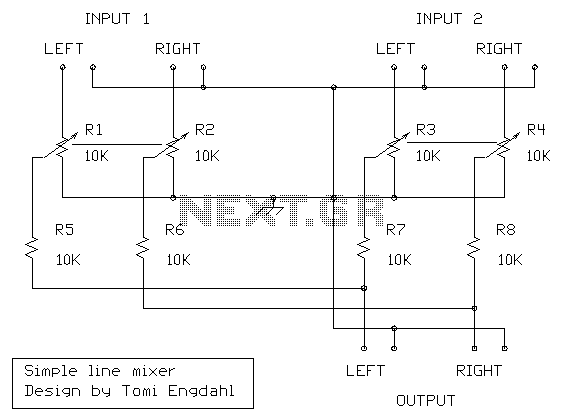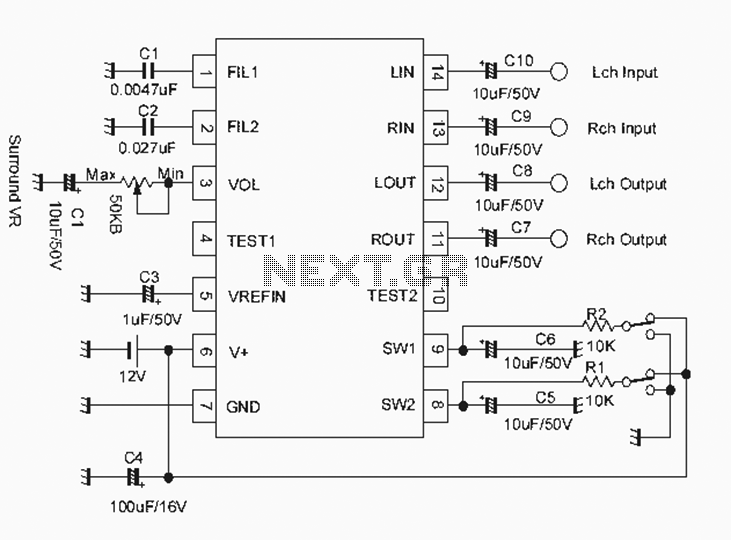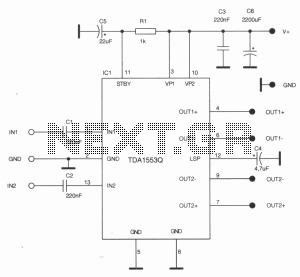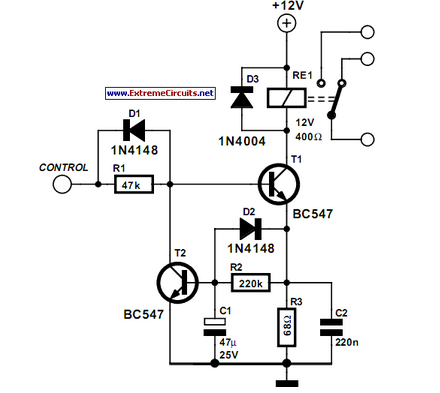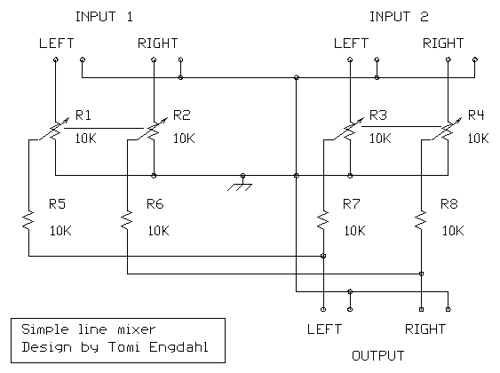
Audio operated relay
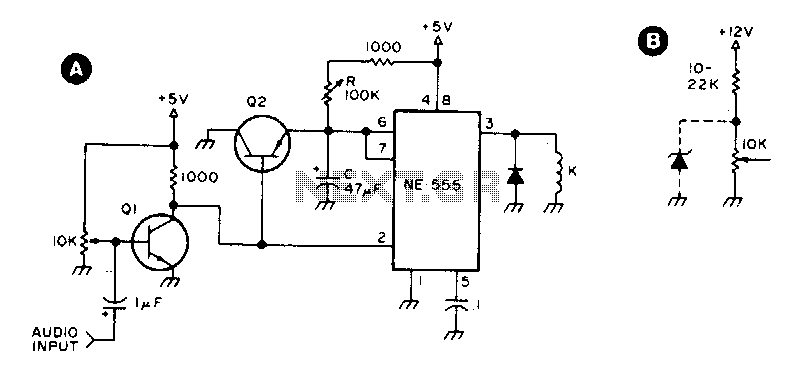
Q1 and Q2 are general-purpose transistors. The 10 kΩ input potentiometer is adjusted to a point just short of where Q1 turns on, as indicated by relay K engaging. K is any 5 V reed relay. With the specified values for resistor R (100 kΩ) and capacitor C (47 µF), timing values from 5 to slightly over 5 seconds can be achieved. Additionally, a 22 Ω series resistor is added to the 10 kΩ input potentiometer when a 12 V supply is used. A suitable 12 V reed relay must be employed at K.
The circuit employs two general-purpose transistors, Q1 and Q2, which serve as the primary switching elements. The input control is facilitated by a 10 kΩ potentiometer, which allows for fine adjustment of the input signal. This potentiometer is critical in setting the threshold at which transistor Q1 activates, thereby energizing the relay K. The relay used in this configuration is a 5 V reed relay, which is suitable for low-power applications.
The timing characteristics of this circuit are determined by the resistor R and capacitor C values. A resistor value of 100 kΩ in conjunction with a capacitor of 47 µF creates an RC time constant that yields timing delays ranging from 5 seconds to slightly over 5 seconds. This delay can be critical in applications such as timing circuits or delay switches, where a specific on-off sequence is required.
When operating the circuit with a 12 V power supply, it is essential to include a 22 Ω series resistor with the 10 kΩ potentiometer. This adjustment is necessary to accommodate the higher voltage and to ensure that the input current remains within safe limits for the transistors and the relay. Additionally, a 12 V reed relay must be used in this configuration to ensure proper operation, as the relay's coil must be compatible with the supply voltage to function correctly.
Overall, this circuit design provides a flexible solution for applications requiring timed relay activation, with the potential for adjustments based on varying supply voltages. Proper selection of components and values is crucial for achieving the desired performance and reliability in practical implementations.Ql and Q2 are general purpose transistors. The 10 K input pot is adjusted to a point just short of where Ql turns on as indicated by K pulling in. K is any 5 V reed relay. With the values shown for R (100 K) and C (47 µf), timing values from 5 to slightly over 5 seconds can be achieved
B shows the addition of a 22 ? series resistor to the 10K input pot if a 12 V supply is used. A suitable 12 V reed relay must be used at K. 🔗 External reference
The circuit employs two general-purpose transistors, Q1 and Q2, which serve as the primary switching elements. The input control is facilitated by a 10 kΩ potentiometer, which allows for fine adjustment of the input signal. This potentiometer is critical in setting the threshold at which transistor Q1 activates, thereby energizing the relay K. The relay used in this configuration is a 5 V reed relay, which is suitable for low-power applications.
The timing characteristics of this circuit are determined by the resistor R and capacitor C values. A resistor value of 100 kΩ in conjunction with a capacitor of 47 µF creates an RC time constant that yields timing delays ranging from 5 seconds to slightly over 5 seconds. This delay can be critical in applications such as timing circuits or delay switches, where a specific on-off sequence is required.
When operating the circuit with a 12 V power supply, it is essential to include a 22 Ω series resistor with the 10 kΩ potentiometer. This adjustment is necessary to accommodate the higher voltage and to ensure that the input current remains within safe limits for the transistors and the relay. Additionally, a 12 V reed relay must be used in this configuration to ensure proper operation, as the relay's coil must be compatible with the supply voltage to function correctly.
Overall, this circuit design provides a flexible solution for applications requiring timed relay activation, with the potential for adjustments based on varying supply voltages. Proper selection of components and values is crucial for achieving the desired performance and reliability in practical implementations.Ql and Q2 are general purpose transistors. The 10 K input pot is adjusted to a point just short of where Ql turns on as indicated by K pulling in. K is any 5 V reed relay. With the values shown for R (100 K) and C (47 µf), timing values from 5 to slightly over 5 seconds can be achieved
B shows the addition of a 22 ? series resistor to the 10K input pot if a 12 V supply is used. A suitable 12 V reed relay must be used at K. 🔗 External reference
